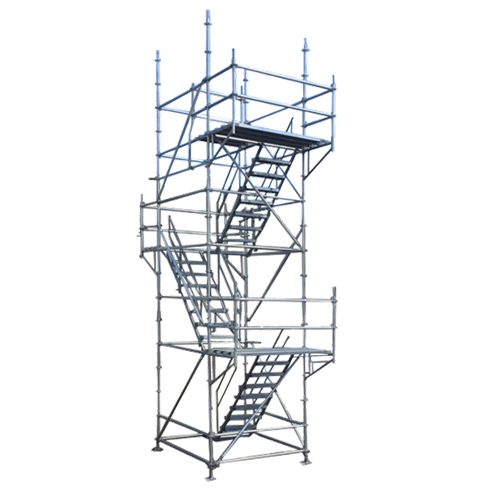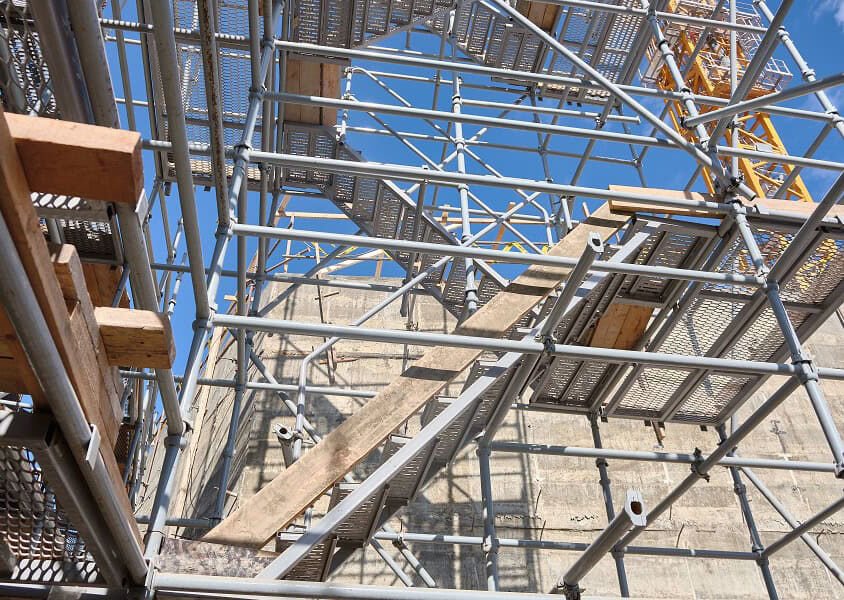Professional Scaffolder Surrey: Your Trusted Partner for Safe Installations
A Comprehensive Overview to the Vital Features of Scaffolding in Modern Building And Construction
The landscape of modern-day building progressively counts on reliable scaffolding systems that prioritize technology, effectiveness, and security. As projects grow in complexity, understanding the important features of scaffolding becomes critical for guaranteeing worker safety and enhancing job timelines. This overview checks out various kinds of scaffolding, highlights vital safety functions, and analyzes material innovations that contribute to efficiency and sustainability. However, the effects of these elements prolong much past simple building and construction practices, triggering a more detailed look at just how they influence overall job success and employee health.
Kinds Of Scaffolding
Although scaffolding systems can differ extensively in style and application, they typically come under numerous unique categories that accommodate various building requirements - Scaffolding. The most usual types include supported scaffolding, put on hold scaffolding, and rolling scaffolding
Sustained scaffolding includes systems supported by a framework of posts, which supply a elevated and steady working surface area. This type is normally utilized for tasks that call for considerable elevation, such as bricklaying or external painting.
Suspended scaffolding, alternatively, is utilized for jobs needing accessibility to high elevations, such as cleaning or repairing structure facades. This system hangs from a roof or an additional framework, allowing workers to reduced or raise the system as required.
Moving scaffolding attributes wheels that permit easy wheelchair across a task site. It is specifically helpful for jobs that require constant moving, such as interior operate in big rooms.
Each type of scaffolding is made with specific applications in mind, guaranteeing that building jobs can be accomplished efficiently and successfully. Recognizing these categories is essential for choosing the ideal scaffolding system to meet both project requirements and site conditions.
Key Security Functions
Security is vital in scaffolding systems, as the potential risks related to working at heights can result in major mishaps otherwise effectively taken care of. Key security functions are necessary to guarantee the well-being of employees and the honesty of the construction website.
Primarily, guardrails are critical. These obstacles give a physical protect against drops, significantly decreasing the danger of severe injuries. Additionally, toe boards are frequently made use of to stop tools and products from dropping off the scaffold, safeguarding workers below.
Another essential element is making use of non-slip surface areas on systems. This function enhances grasp, particularly in damaging weather condition problems, thereby minimizing the possibility of drops and slides. Gain access to ladders should be securely positioned to help with secure entry and leave from the scaffold.
Regular examinations and upkeep of scaffolding systems are also essential. These examinations make sure that all elements remain in good problem and operating correctly, resolving any wear or damages promptly.
Finally, correct training for all employees involved in scaffolding procedures is necessary to guarantee that they recognize safety and security procedures and can recognize potential risks. Scaffolding. Jointly, these functions develop a safer working atmosphere and dramatically mitigate threats connected with scaffolding
Product Technologies
Advancements in material scientific research have considerably influenced the scaffolding market, improving both security and performance in modern construction. The introduction of high-strength steel and aluminum alloys has transformed standard scaffolding systems. These products are not just lighter, making them much easier to set up and move, however likewise supply remarkable load-bearing abilities. This results in scaffolding frameworks that can sustain greater weights while reducing the danger of collapse.
In addition, ingenious composite products, such as fiberglass-reinforced plastics, have become practical alternatives. These products are immune to corrosion and ecological deterioration, thus expanding the life expectancy of scaffolding systems, especially in extreme weather. Using such materials adds to lower upkeep expenses and guarantees constant efficiency in time.


Design Considerations
Taking into consideration the intricacies of contemporary building jobs, effective scaffolding design is paramount to ensuring both performance and security. Design factors to consider need to encompass numerous aspects, including load ability, height, and the specific demands of the building site. Each job presents one-of-a-kind difficulties, necessitating a flexible technique to scaffolding systems that can adapt to differing conditions.
Architectural honesty is essential; as a result, engineers need to calculate the lots that the scaffolding will certainly support, consisting of workers, products, and tools. The choice of products plays a vital role in making sure the scaffolding can withstand these tons while continuing to be resilient and light-weight. Additionally, the design needs to allow for simple accessibility and egress, helping with the smooth activity of materials and workers.
Safety and security features, such as guardrails and non-slip surfaces, need to be integrated to reduce threats of accidents. The design has to consider the surrounding environment, including nearby structures and prospective threats. By resolving these style considerations, construction companies can boost the effectiveness of scaffolding systems and promote a safer working environment, ultimately contributing to the overall success of the project.
Maintenance and Inspections
The effectiveness of scaffolding systems expands past first layout and execution; recurring upkeep and routine examinations are essential to guaranteeing their proceeded efficiency and safety throughout the duration of a task. Normal assessments must be carried out by qualified workers to identify any kind of indicators of wear, damage, or instability that can compromise the honesty of the scaffolding.
Upkeep procedures should consist of regular checks of architectural elements, such as frames, installations, and slabs, ensuring that all components stay secure and cost-free from deterioration or other wear and tear. Furthermore, the performance of safety and security functions, such as guardrails and toe boards, should be assessed to make sure compliance with safety laws.
Documentation of all inspections and maintenance tasks is crucial for liability and regulatory conformity. A systematic technique to record-keeping not just help in tracking the condition of the scaffolding however also supplies necessary evidence in the occasion of an incident.
Eventually, developing an extensive upkeep and inspection routine will significantly decrease the threat of crashes and enhance the general safety and security of the building website. By focusing on these techniques, construction supervisors can protect workers and promote the task's integrity.

Verdict
In verdict, the crucial features of scaffolding in contemporary building encompass a variety of essential components, consisting of diverse types, vital safety and security devices, material innovations, and thoughtful design factors to consider. Stressing security via guardrails and non-slip surface areas, together with developments in products like high-strength steel, improves both performance and sustainability. Regular upkeep and evaluations are vital for making certain structural honesty scaffolding on stairs and safety and learn the facts here now security on construction websites, ultimately promoting reliable task implementation and advertising the wellness of employees.
The landscape of modern building increasingly depends on reliable scaffolding systems that prioritize safety, innovation, and effectiveness.Improvements in material science have dramatically affected the scaffolding industry, boosting both safety and effectiveness in contemporary building and construction. Overall, these material developments not only improve the efficiency and security of scaffolding systems yet additionally straighten with the sector's press in the direction of sustainability, as many modern materials are designed to be more eco pleasant.
Considering the intricacies of modern-day building and construction tasks, effective scaffolding style is vital to making sure both performance and security.In final thought, the important functions of scaffolding in contemporary construction encompass a range of critical components, including varied kinds, vital security mechanisms, product technologies, and thoughtful layout considerations.